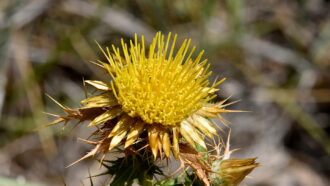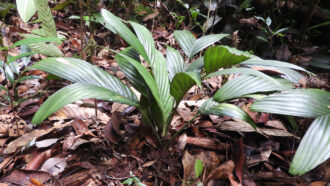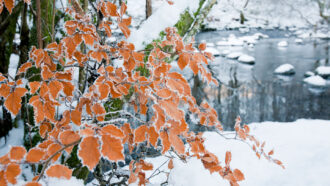Earthworm invaders may be stressing out some maples
Worms are only great for soil when ecosystems have evolved with them
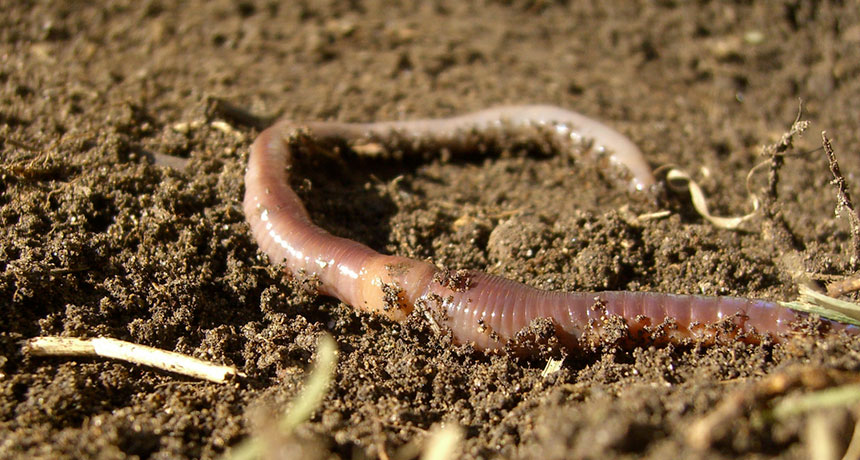
Where worms are ecological newcomers, such as in the U.S. Upper Midwest. There invasive earthworms seem to be causing problems.
BENKETARO/FLICKR (CC-BY 2.0)
Earthworms have a reputation for being good for the soil. They recycle nutrients in the ground and keep everything mixed. But where there have been no earthworms for thousands of years, incoming wrigglers can wreak havoc. They can trigger a cascade of problems throughout the local food web. Now comes evidence that earthworms in the U.S. Upper Midwest may be stressing the region’s sugar maples.
There are native earthworms in North America. Those are not, however, found in regions that were covered by glaciers during the Ice Age. Once that ice melted, living things returned. Earthworms don’t move quickly, though. So even after 10,000 years, they’ve only made small inroads into the North on their own.
But people have inadvertently encouraged their settlement. Sometimes they’ve dumped leftover fishing bait at worm-free sites. Or soil stuck to their cars or trucks may accidentally have brought along worms or eggs. Today, earthworms can be found living as far north as the boreal forests in Alberta, Canada.
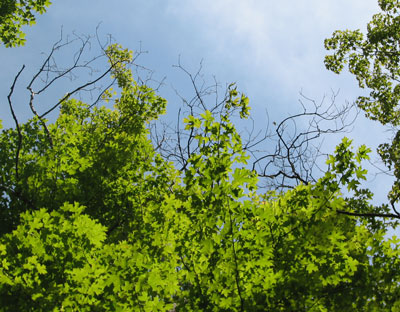
Earthworms “are not really supposed to be in some of these areas,” says Tara Bal. She’s a forest-health scientist at Michigan Technological University in Houghton. “In a garden, they’re good,” she notes. They help to mix soil. But that isn’t a good thing in a northern forest where soil is naturally separated into layers and where nutrients tend to be found only in the uppermost layer near the leaf litter.
Those unmixed soils are “what the trees have been used to,” Bal explains, including the sugar maple. Its shallow roots look for shallow access to nutrients. As worms mix up the soils, they move some of that nutrient-rich layer away.
Bal didn’t start out studying worms in northern regions. She and her colleagues were brought in to address a problem that sugar-maple growers were experiencing. Some of the trees appeared to be stressed out. They were experiencing what’s called dieback. This is where whole branches die, fall off and regrow. This is worrisome because if enough of the tree dies off, “it’s a slow spiral from there,” Bal says: The whole tree eventually dies.
To investigate, the researchers collected data on trees in 120 plots in Michigan, Wisconsin and Minnesota. They looked for anything that might be affecting them, from soil type to slope to insects. And they compared trees on growers’ land to those on public land. They thought the problem might trace to how the trees might have been managed.
What “kept coming up over and over again,” Bal says, “was the forest floor condition.” And that, she concludes, “is directly related to the presence of earthworms.”
While they didn’t go out to look for the worms, they could see signs of them in the amount of carbon in the soil and in changes in the ground cover. Wildflowers, for instance, were replaced by grasses and sedges.
The researchers described their new findings early online in Biological Invasions.
Bal and her team can’t say what this means for the production of maple syrup and your morning pancakes. It might mean nothing at all. But “worms are ecosystem engineers,” she notes. “They’re changing the food chain.” Everything from insects to birds to salamanders could be affected by the arrival of worms.
Even if the sugar maples take a hit, though, there could be an upside, Bal notes. These trees are often grown with few other types of trees around. Such a grove is naturally less resilient to climate change and extreme weather. So replacing some of those sugar maples with other trees, she says, might result in a healthier, more resilient forest in the future.

